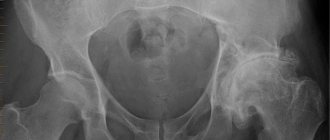Olfactory impairments (dysosmia) occur in various diseases and are reported in approximately 1-19% of the world's population [1]. The most common causes of their occurrence are diseases of the nose and paranasal sinuses (21%), respiratory viral infections of the respiratory tract (39%), consequences of traumatic brain injury (17%), congenital anosmia (3%), diseases of unknown etiology (18% ) and others (3%). In most cases (13.3%), we are talking about a decrease in the acuity of smell, less often (5.8%) anosmia is diagnosed [2, 3].
In accordance with modern ideas about the causes of olfactory disorders, they are divided into five types.
1. Respiratory dysfunction. It is caused by impaired air movement in the area of the olfactory cleft (deformation of the nasal septum, synechiae, hypertrophic, allergic rhinitis, tumors and polyps of the nasal cavity) [2, 4, 5].
2. Epithelial dysfunction. Associated with changes in the mucous membrane in the olfactory area. The reason for limiting the contact of an odorous substance with the receptor cells of the neuroepithelium is the insufficiency of the secretion of the Bowman glands in atrophic rhinitis, ozena, and the dystrophic form of scleroma [4, 6].
3. Combined disorders. Occurs with a combination of ventilation disorders and damage to the mucous membrane.
4. Neural dysfunction. Caused by damage to the filia olfactoria
, observed in patients who have had the flu, during intoxication with antibiotics, can occur with scleroma, neoplasms of the nose and nasopharynx. Olfactory disorders may be characterized by a variety of neurodynamic phenomena, symptoms of irritation (hyperosmia, parosmia, olfactory hallucinations) and loss (decreased, absent sense of smell, impaired odor recognition) [4, 5, 7].
5. Central disorders. They occur due to pathology of the conduction pathways and olfactory centers. Isolated damage to the pathways occurs mainly with traumatic brain injury, with neoplasms of the nose and nasopharynx growing into the cranial cavity; scleroma, brain tumors, arachnoiditis, subarachnoid hemorrhages. Central olfactory disorders are accompanied by impaired recognition of odors and olfactory hallucinations [4, 7].
An important condition for adequate perception and identification of odors is the normal functioning of the endocrine system, in particular, the level of sex hormones in the body, which have a significant impact on the state of smell.
Sex hormones
In women, especially those of reproductive age, the sense of smell is affected by fluctuations in ovarian steroids throughout the menstrual cycle. In addition to changing the sensitivity of the central parts of the olfactory analyzer, fluctuations in the level of female sex hormones can have a negative effect on the state of the microvasculature of the nasal mucosa, causing symptoms of nasal obstruction. This is associated with the occurrence of respiratory olfactory dysfunction against the background of worsening nasal breathing when using hormonal contraceptives, as well as in the middle of the menstrual cycle [8]. The peak of these changes coincides with a rise in the plasma level of estradiol (estrogen) in the follicular and ovulatory phases [9, 10], and changes also increase in the ovulatory and/or menstrual phases [11]. Olfactory sensitivity often correlates with peripheral cortisol levels, which are higher during ovulation [12]. However, there are publications whose authors report no influence of the menstrual cycle and pregnancy on olfactory sensitivity [13, 14].
Restructuring of the activity of the hypothalamic-pituitary system against the background of a decrease in estrogen levels and associated changes in the autonomic nervous system are one of the causes of dysosmia (anosmia) in postmenopausal women, after removal of the ovaries, and uterine fibroids [15, 16].
Studies of chemosensory evoked potential thresholds in adolescents have shown gender differences. In women, cortisol levels increase after exposure (inhalation) to androstenedione, suggesting that in humans, like rodents, chemosignals may influence hormonal balance [17].
Symptoms of loss of smell
Symptoms of loss of smell basically boil down to the fact that a person completely ceases to smell. This is his main complaint, with which he turns to an ENT doctor. How quickly symptoms of smell loss develop mainly depends on the cause. Sometimes the reason lies in atrophic changes in the nasal mucosa and its receptors. In this case, the sense of smell disappears gradually, decreasing each time. And quite the opposite happens, for example, when the nose is injured, or a runny nose appears. Then the patient complains of a more severe loss of smell.
Preparation of ozonated solution
Sometimes symptoms of loss of smell are a consequence of previous infectious diseases. In this case, it is necessary that the patient remembers to mention this to the doctor, which will allow the correct diagnosis to be made and the necessary treatment to begin as soon as possible.
Symptoms of loss of smell can be eliminated! The main thing is to seek specialized help as early as possible!
Pregnancy
More pronounced changes in hormonal levels in a woman’s body, accompanied by noticeable disturbances in olfactory function, occur during gestation [18-20]. The causes of impaired sense of smell in pregnant women are dysfunction of the autonomic nervous system, changes in the functioning of the endocrine glands and the activity of the reticulo-hypothalamic-limbic system, in which the structures of the olfactory brain occupy a central place.
As clinical and experimental observations show, from the first weeks of pregnancy a focus of excitation (gestational dominant) appears, which has a significant impact on the state of the olfactory centers located here [18]. Already in the early stages of pregnancy, the greatest activity of rhinencephalic structures (olfactory bulbs, amygdala) is recorded. With increasing gestational age, the focus of increased excitation shifts to the diencephalic formations (diencephalon). This change in activity has a significant impact on the tone of various parts of the autonomic nervous system [21]. Irritation of the hypothalamus
rhinencephalic structures, in which the parasympathetic department is represented, is accompanied by inhibition of the functional activity of the olfactory analyzer. With an increase in the tone of the sympathetic centers located in the hypothalamic-mesencephalic formations, an exacerbation of olfactory sensitivity is recorded [18].
According to the literature, increased olfactory sensitivity is more often (67% of women) recorded in the early stages of pregnancy, 17% experience parosmia (distorted perception of smell) and 14% experience phantosmia (olfactory hallucinations). In late pregnancy, olfactory disorders are less common and are almost absent after childbirth. In pregnant women, chemosensory disorders in the form of increased sensitivity to odors, often leading to vomiting and nausea in the early stages of gestation, perform a protective function in relation to the mother and fetus, as they contribute to the body’s adaptation to new conditions and prevent food poisoning [21-23].
According to other data, deterioration of the sense of smell develops more often towards the end of pregnancy. During this period, estrogen levels increase and acetylcholinesterase is inhibited, which increases the level of acetylcholine in the blood. This, in turn, leads to hyperemia, swelling of the nasal mucosa, an increase in the volume of the inferior and middle turbinates and the occurrence of respiratory hyposmia [16, 19].
Treatment for loss of smell
Photodynamic therapy session for impaired sense of smell
The most common cause of impaired sense of smell is insufficient air flow into the olfactory gap due to swelling of the nasal mucosa. Such swelling of the upper floors of the nose accompanies diseases such as nasal polyps and vasomotor rhinitis; in children, the most common cause of anosmia is adenoids. Currently, there are not so many effective non-surgical methods for treating the above diseases; clinics in Russia offer treatment for loss of smell mainly using surgical methods, which, as a rule, combat the effect, not the cause of the disease.
By contacting us, you can be sure that you will receive the best and highest quality medical care! We will restore your sense of smell in the shortest possible period of time!
The fact is that modern therapy for inflammatory diseases of the upper respiratory tract, which is the cause of loss of smell, does not affect all links in the pathogenesis of the pathological process, which is the reason for its ineffectiveness. We have developed an original concept for the treatment of ENT diseases; the effectiveness of our method lies in its impact on the entire area of the mucous membrane of the upper respiratory tract. We manage to sanitize the mucous membrane, restore it and stabilize local immunity, which cannot be achieved with modern medications. We can cure a number of difficult-to-treat diseases such as vasomotor rhinitis and nasal polyps, which most often cause loss of smell, without surgery.
Pathology of the pituitary gland
To date, a limited amount of material has been published concerning the prevalence and characteristics of olfactory disorders in pituitary pathology. A case of cacosmia and hypopituitarism is mentioned in a patient with lymphocytic cystic hypophysitis, who showed normalization of olfactory function after surgical treatment.
Olfactory disorders are characteristic of Kallmann syndrome, a hereditary genetically determined disease that is characterized by congenital anosmia and secondary hypogonadism caused by impaired embryogenesis of the olfactory organ and olfactory bulbs. Anosmia occurs due to impaired migration of bipolar cell axons into the olfactory bulbs, and hypogonadism occurs due to impaired GnRH-secreting neurons from the olfactory bulbs to the hypothalamus [24, 25].
Pathology of the adrenal glands
According to studies, patients with adrenocorticoid deficiency (Addisson's disease, panhypopituitarism) showed unusually high olfactory sensitivity compared to healthy people. It is interesting to note the fact that when patients were treated with deoxycorticosterone acetate, olfactory thresholds did not deteriorate, but when treated with prednisone, olfactory sensitivity thresholds returned to normal from the first day of treatment. The nature of the effect of carbohydrate-active steroids on the sense of smell is not clear. This may be due to general effects on the nervous system, especially sensory areas [26].
Diabetes
Hyposmia occurs in 4.4% of patients with diabetes, but its etiology in this disease has not been fully elucidated. It is believed that macrovascular disorders, in particular ischemia of the olfactory region, may have an important pathogenetic significance in olfactory disorders in these cases.
A cross-sectional clinical study revealed a significant decrease in olfactory sensitivity in patients with diabetes mellitus, which is believed to be associated with age and degenerative changes in this disease. A clear decrease in the acuity of smell was noted in patients with type 2 diabetes mellitus compared to a group of patients with type 1 diabetes mellitus [27].
Pathology of the thyroid gland
Dysosmia is an unusual manifestation of hypothyroidism that is not even mentioned in textbooks on endocrinology and thyroid dysfunction. In patients with autoimmune thyroiditis and hypothyroidism, olfactory disorders are less common than nasal breathing disorders. According to literary sources, an increase in the thresholds for perception and recognition of odorous substances of olfactory and mixed action was recorded in 14-39% of patients with thyroid pathology (hypothyroidism) [28-30].
Data from experimental studies conducted on animals are contradictory: some authors showed that in experimental models with induced hypothyroidism anosmia was recorded, which disappeared after thyroxine replacement therapy [31], while others, on the contrary, denied the influence of hormonal changes on olfactory function (propylthiouracil- induced hypothyroidism) [32]. According to quantitative thymidine autoradiography, a decisive regulatory influence of thyroid hormones on olfactory neurogenesis of the olfactory receptor layer in rats was noted, in particular, in early infancy. Propylthiouracil-induced hypothyroidism results in impaired neural development of the olfactory epithelium, although mature receptor neurons were not completely lost. The results of the study revealed a decrease in the maturation of olfactory receptor neurons [33].
It is believed that one of the leading mechanisms of decreased sense of smell in hypothyroidism may be changes in the central nervous system characteristic of this disease, associated with swelling of brain tissue and a slowdown in metabolic processes. It is believed that this to a certain extent affects the functional activity of the olfactory receptor and other parts of the olfactory analyzer [29]. The negative effect of hypothyroidism on the activity of the central parts of the olfactory analyzer is evidenced by a decrease in the ability to identify odors in such patients [34].
In addition, noteworthy is the high probability of developing in hypothyroidism a violation of the aerodynamics of the nose (which leads to a limitation in the supply of odorous substances to the olfactory receptor) and a hyposecretory form of conductive hyposmia, caused by inhibition of the secretory activity of the nasal mucosa. Finally, an important role in the formation of dysosmia in hypothyroidism is played by swelling of the olfactory area and mechanical compression of both receptor cells and olfactory filaments at the site of their entry into the holes of the perforated plate [29].
Olfactory dysfunction in hypothyroidism is often associated with taste disturbances (usually the ability to recognize sweet and salty foods is reduced), which has an extremely negative impact on the quality of life of such patients [30, 35].
Valery Svistushkin spoke about the mechanisms of loss of smell during COVID-19
The situation with coronavirus is increasingly reminiscent of the movie “Perfect Feeling.” His characters, after being infected with a mysterious virus, gradually lost their sense of smell, then taste, then hearing... We have already gotten used to anosmia (impaired sense of smell) with COVID-19, and many also complained about dysgeusia and impaired taste. And recently it was officially proposed to add hearing impairment to the number of symptoms of Covid. This was stated by scientists from University College London and the Royal National Throat, Nose and Ear Hospital.
How exactly does coronavirus attack our senses, how are such complications treated, and what are the chances of a full recovery? We asked Professor, Doctor of Medical Sciences, Director of the Clinic of Ear, Throat and Nose Diseases of Sechenov University Valery Svistushkin about this.
“The new coronavirus continues to pose mysteries for us,” says Valery Mikhailovich. – It turned out that SARS-CoV-2 affects the ear-nose-throat system differently than other respiratory viruses. It is known that it penetrates cells by clinging to a certain receptor on their surface (the so-called angiotensin-converting receptor type 2). Such receptors are found in a variety of organs and tissues of our body: the mucous membrane of the nose and throat, lungs, heart, kidneys, etc. And these same receptors, as it turned out, are present in sensitive auditory cells. This is the name given to the cells of the nervous tissue responsible for the primary perception of odors and sound waves. The disruption of these cells by coronavirus is one of the versions of problems with smell and hearing in patients.
The second possible option is the effect of the virus directly on the vessels that supply the nervous system.
THREE-QUARTERS OF SICK PEOPLE LOSE THE SMOKE
“We at Sechenov University conducted a study of the phenomenon of loss of smell during COVID-19 (several university clinics were repurposed as Covid hospitals. - Ed.), says Professor Svistushkin. – Data have shown that 70-75% of patients with coronavirus infection suffer from a decrease in sense of smell or even its complete loss, this is called anosmia. Sometimes this is the only symptom.
– Is it true that loss of smell is more common in mild forms of Covid?
- No, observations do not confirm this. Rather, with severe forms, people simply no longer pay attention to the lack of odors. They would have to breathe and survive. As for the mechanism of loss of smell, our Western colleagues figured it out. Everything turned out to be quite complicated. To explain it in a simplified way, the olfactory cells are surrounded by so-called supporting cells (they are responsible for ensuring the normal functioning of the olfactory cells). Recent data have shown that it is the supporting cells that are damaged, and this leads to dysfunction of the olfactory cell itself.
LIFE WITHOUT ODOR
“This situation confronts us with a serious problem of how to treat complications,” continues Valery Svistushkin. – If we were talking about the impact of the virus on the olfactory (receptor) cells themselves, then well-known treatment methods could be used: hormonal anti-inflammatory drugs to improve nerve conduction, cell nutrition, etc. But how to treat supporting cells is still unclear . Unfortunately, this leads to the fact that in some patients (up to 5-10%) their sense of smell does not return at all. In any case, over six months of observation, the perception of odors was not restored. So we still have to figure out how to treat such patients.
– You can often hear that a runny nose with coronavirus is different from a runny nose with influenza and other acute respiratory viral infections. Have you observed this in your research?
– We did not notice any pattern with covid infection. Some may have just a classic runny nose, others may have nasal congestion, and others may only have a loss of smell.
– Does loss of smell occur with other respiratory viruses?
- Certainly. But the picture there is radically different from what is happening with COVID-19. In the case of ARVI, a decrease in the sense of smell most often occurs not due to disruption of the olfactory cells, but simply due to swelling and inflammation of the nasal mucosa. This is a completely different mechanism. We have never seen anything like what happens with coronavirus.
HEARING REDUCTION: THERE ARE Few VICTIMS SO FAR
“The situation with the prevalence of hearing impairment during COVID-19 still looks very uncertain,” says the professor. “There were only a few of our patients.” There are also few of them in the world - there is data on a certain number in England and an Egyptian study involving about 20 patients. How much the virus itself is “culpable” for hearing impairment, and to what extent it affects the auditory cells, still needs to be understood. This requires study.
IN THE TOPIC
Who's at risk
In general, the risk of decreased and even hearing loss during COVID-19 is increased in those who initially have factors predisposing to hearing loss, explains Dr. Svistushkin. This:
- hypertension,
- atherosclerosis,
- diabetes
- cardiovascular changes.
While there has been no research in this area, we are talking about assumptions, the expert emphasizes.
BY THE WAY
Why does the taste disappear?
– This is directly related to a violation of the sense of smell. When a person does not perceive smells, all food seems tasteless to him, explains Valery Svistushkin. – There is a test that clearly confirms this. If you close your eyes and nose while eating, you may not feel the difference in the dishes. Taste is directly related to our sense of smell. And if the perception of smells is impaired, then taste also begins to suffer.
Link to publication: Komsomolskaya Pravda









